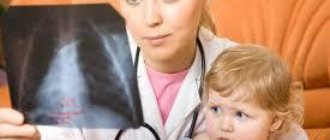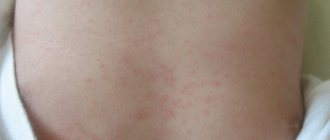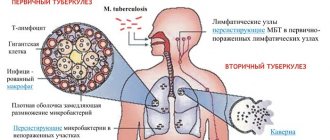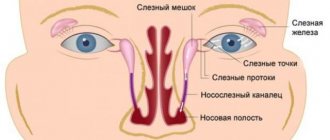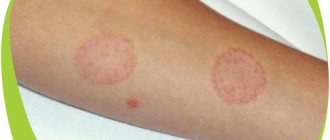How chickenpox begins in children - the first signs and symptoms in the initial stage (photo)
Chickenpox or varicella is an acute infectious disease caused by viruses of the herpes family. A distinctive feature of chickenpox is a rash on the skin in the form of small blisters. Almost all children aged 2 to 7 years old suffer from chickenpox, especially if they attend kindergarten, since the pathogenic virus is very volatile and can penetrate not only into adjacent rooms, but also into apartments.
In addition, a large percentage of the incidence of chickenpox in children is due to the fact that the latent period of the disease is 14-21 days, due to which the virus has time to spread and cover all children in the group or kindergarten. The chickenpox virus ceases to act until the last rash ends, that is, the virus stops being transmitted when the last blisters begin to heal.
How can you get infected?
The virus is transmitted from person to person by airborne droplets. Chickenpox penetrates through the mucous membranes of the mouth, respiratory tract, and eyes deep into the body.
The chickenpox virus is very persistent and spreads quickly. He has the ability to penetrate even into other rooms and neighboring apartments. This is why children in groups become infected with chickenpox so easily. Just one child in a group who becomes infected with chickenpox immediately becomes dangerous for the children of the entire institution.
Pregnancy and chickenpox
Adults do not tolerate chickenpox as easily as younger children. But doctors are especially afraid for pregnant women who have not yet had time to get sick. This disease can have a negative impact on the fetus (if the woman herself becomes ill for the first time), so blood tests for pregnant women must include an analysis for antibodies to the varicella zoster virus.
Depending on the stage of pregnancy, the virus affects the health of the fetus in different ways. In the first trimester, the damage will be very serious (the narnar system, eyes, skin suffers), and the risk of death is high. The disease in the second trimester of pregnancy can lead to various malformations of the baby. In the third trimester, the degree of exposure to the fetus decreases, but there may also be consequences.
There is such a thing as “congenital chickenpox in newborns.” It occurs in a quarter of cases after the expectant mother gets chickenpox, and the fatality rate is approximately 20%. With congenital chickenpox, children experience developmental disorders; many children develop various neurological disorders. If the virus has been detected in the body of a newborn, then timely prescribed antiviral treatment will produce results.
First signs
How does chickenpox start in children? First of all, the child develops:
- high temperature (up to 39.5°C),
- feverish reaction;
- moderate intensity headache;
- pain in the abdominal area (not always);
- general malaise;
- signs of intoxication (possible nausea and vomiting);
The first signs of chickenpox in children, as a rule, are indistinguishable from “normal” ARVI. The main symptom of chickenpox is a characteristic rash (first small pink spots, and then blisters with clear liquid).
Chickenpox in newborns: risk factors
It should be noted that almost all people are susceptible to the smallpox virus, but most often the first episode of this disease occurs in children aged 1-7 years. Older children and infants are less likely to get smallpox. This is due to the presence of antibodies in the blood that suppress the activity of the virus and prevent it from multiplying inside the body.
For a newborn, the chances of contracting chickenpox largely depend on whether antibodies to the Varicella-Zoster virus are present in the blood. In older children, antibodies are produced by the body itself, but in infants the immune defense mechanisms are not yet fully formed. A newborn can receive antibodies that protect against the disease only from the mother - along with milk during feeding or earlier, during the gestation period.
However, such antibodies are not always present in the mother’s body. Their presence is determined by whether the woman previously suffered from this disease, as well as when exactly this happened. If a woman contracts smallpox during pregnancy, antibodies may not have time to form and the fetus will be infected with the virus. Infection with chickenpox can cause serious complications and disruption of fetal development. In the most severe cases, miscarriage, premature birth, and stillbirth are possible.
The body of a newborn baby is extremely susceptible to infections, so infection can occur after birth - for example, through contact with staff or visitors in the maternity hospital. The risk of developing a manifest form of the disease largely depends on the general condition of the body: insufficient feeding, overheating or hypothermia, sleep disturbances and other factors that weaken the immune system increase the likelihood of an infant contracting smallpox.
Symptoms and signs of chickenpox in children
Basically, chickenpox is characterized by a typical, uniform course in all children, with rare exceptions, so the following main symptoms of this disease in the initial stage can be identified (see photo):
- Sudden onset of the disease with the development of intoxication and a sharp increase in temperature.
- Almost simultaneous appearance on the skin, sometimes on the mucous membranes, of typical vesicular elements.
- An undulating course of the disease process with periodic additions of papulovesicles.
- Increase in body temperature with each new wave of rash.
- The formation of crusts on the surface of the bubbles, which subsequently do not leave any scars after recovery.
All stages of chickenpox in children follow each other sequentially and are characterized by certain typical symptoms.
- The initial stage of chickenpox and the child is the incubation period, which covers the time from the penetration of varicella-zoster into the baby’s body until the immediate manifestation of the first clinical symptoms. Its duration is considered to be from a minimum of 5 to a maximum of 21 days, however, on average it can last about 2 weeks. At this time, varicella-zoster actively multiplies and also accumulates in the mucous membranes of the oropharynx and nasal cavity, and is then able to overcome all protective barriers and penetrate the blood. At this moment, the very first sign of chickenpox in children develops: the appearance of a rash on the body, accompanied by a high temperature.
- The stage accompanied by the symptoms described above is called the initial stage, but sometimes it is preceded by a so-called prodromal period, during which a rise in temperature, headaches, weakness, and lethargy are recorded. The temperature with chickenpox in children sometimes reaches 40°C and above.
- As a result of the penetration of the chickenpox virus into the skin, local swelling is formed and a period of rash occurs, which can last from just 2 days to 7 days or even more. It is characterized by the initial formation of a red spot, which quickly takes the form of a papule, then transforms into a vesicle, which subsequently becomes covered with a crust. Most often, the patient’s torso is first affected by the elements of the rash, then the arms, legs, and only after that they can be detected on the face and scalp. This process is also characterized by very disturbing itching, which causes serious discomfort. Along with the formation of a rash, an increase in lymph nodes is observed, as well as the manifestation of symptoms of intoxication of the body.
- The last stage of chickenpox in children is characterized by normalization of body temperature, falling off of crusts, and improvement of the patient’s well-being. At the site of the former pathological element, covered with a crust, brownish pigmentation remains at first, however, over time it disappears. The skin after chickenpox in children, in the absence of constant scratching of itchy elements, with careful treatment and prevention of infection, remains healthy and clean. The average duration from the moment the first signs appear until the skin is completely cleared of crusts is about 3 weeks.
Chickenpox occurs extremely rarely in infants under 6 months of age, since the child is protected by antibodies received from the mother. If the disease is registered in a child under one year old, it proceeds quite easily. The temperature with chickenpox in children of this age is usually low, the period of rash is short, and the intoxication syndrome is practically not expressed. However, this applies to children born to mothers who had chickenpox as children. Otherwise, chickenpox in children under one year of age lasts quite a long time and is severe.
What are the manifestations of chickenpox (chickenpox)?
The chickenpox virus enters through the respiratory tract and conjunctiva. It is believed that the virus multiplies in the mucous membrane of the nasopharynx and regional lymph nodes.
The initial entry of the virus into the blood occurs a few days after infection and contributes to the entry of the virus into the epithelial cells of the skin, where further reproduction of the virus and corresponding skin changes occur.
Then a secondary entry into the blood . It should be remembered that not only the skin epithelium can be affected, but also the mucous membranes of the gastrointestinal tract, respiratory tract, and genitourinary system. Considering that the virus is tropic to nervous tissue, degenerative and necrotic changes can develop in the nerve ganglia, sensory nerve roots and spinal cord.
Incubation period . The period from the virus entering the body to the onset of clinical manifestations ranges from 5 to 21 days after exposure, usually 1-2 weeks. The incubation period may be longer in immunocompromised patients.
Infected people may have a mild prodrome that precedes the onset of the rash. In adults, this may be 1 to 2 days of fever and malaise, but in children, a rash is often the first sign of illness.
The onset is most often acute . Fever lasts 2-7 days, longer in severe cases. Patients complain of an itchy rash, body aches, decreased appetite, sleep disturbance, and headache. Nausea and vomiting may occur.
The first elements of the rash appear on the face and torso, and then on the scalp and extremities; The greatest concentration of lesions is on the torso with the appearance of rashes within 4-6 days. In this case, elements of the rash are present at several stages of development (for example, redness and papules can be observed simultaneously and in the same area as vesicles and crusts).
The rash can also occur on the mucous membranes of the oropharynx, respiratory tract, vagina, conjunctiva and cornea.
The rash elements usually have a diameter of 1 to 4 mm. Vesicles (bubbles) are superficial, single-chambered and contain clear liquid, surrounded by a red rim. Over time, they dry out and turn into crusts, after rejection of which temporary pigmentation and occasionally small scars remain.
The number of rash elements ranges from single to multiple. The vesicles may rupture or fester before they dry out and take on a crusty appearance. The rash is accompanied by severe itching.
In 20-25% of patients, rashes may occur on the mucous membranes of the mouth and gums. Usually they quickly open, form erosions and are accompanied by pain, burning and increased salivation.
About 2-5% of patients have elements of a rash on the conjunctiva.
Also, with chickenpox, as a rule, the lymph nodes (submandibular, cervical, axillary, inguinal) become enlarged.
Recovery from the initial chickenpox infection usually results in lifelong immunity. But recently, cases of recurrent chickenpox have become increasingly common. This is not common in a healthy person, and most often occurs in immunocompromised individuals.
What complications can occur with chickenpox?
The disease is usually mild, but complications may occur, including bacterial infections (eg, bacterial skin lesions, pneumonia) and neurological infections (eg, encephalitis, meningitis, myelitis), which can be fatal.
Secondary bacterial skin infections , which are caused by streptococcus or staphylococcus, are the most common cause of hospitalization and outpatient medical visits. Secondary infection with invasive group A streptococci can cause abscesses and cellulitis.
Pneumonia after chickenpox is usually viral, but can also be bacterial. Secondary bacterial pneumonia is more common in children under 1 year of age. It is characterized by an increase in temperature up to 40⁰C, an increase in pallor and cyanosis of the skin, the appearance of a substernal dry cough and shortness of breath. Patients can take a forced position in bed.
Damage to the central nervous system in chickenpox ranges from aseptic meningitis to encephalitis. Cerebellar involvement followed by cerebellar ataxia is the most common presentation of central nervous system disorders but usually has a positive outcome.
Encephalitis is one of the most dangerous complications of chickenpox (10-20% of cases are fatal). This complication manifests itself as headache, nausea, vomiting, convulsions and often leads to coma. Diffuse brain involvement is more common in adults than in children. Chickenpox meningitis may occur together with encephalitis or independently .
Rare complications of chickenpox include Guillain-Barré syndrome, thrombocytopenia, hemorrhagic and bullous chickenpox, glomerulonephritis, myocarditis, arthritis, orchitis, uveitis, iritis and hepatitis.
Once infected, the virus remains hidden in nerve cells and can be reactivated, causing a secondary infection, herpes zoster. It usually occurs in adults over the age of 50 or with a weakened immune system and is associated with a painful rash that can cause permanent nerve damage.
What is herpes zoster?
Herpes zoster (shingles) occurs in people as a manifestation of the reactivation of a latent infection caused by a virus that was in the nerve ganglia after chickenpox. The localization of subsequent rashes will depend on which nerve ganglion the virus (VZV) was in a latent (dormant) state.
Localization of the rash in case of damage to the trigeminal nerve ganglion - on the scalp, in the forehead, nose, eyes, lower jaw, palate, tongue; if the virus is present in the spinal ganglia - on the neck, trunk, upper and lower extremities.
Features of the rash with herpes zoster are:
- vesicles are located on the skin in groups along the corresponding nerve,
- the disease most often begins with pain, followed by redness and corresponding rashes,
- over time the pain becomes less and less,
- the process is always one-sided,
- Usually the rashes are accompanied by fever, malaise, and weakness.
Severity
Depending on the characteristics of its course in children, chickenpox is divided into three forms:
| Mild degree | characterized by isolated rashes, absence of fever and poor health. Herpetic pimples appear in only 2–3 days. |
| Moderate | all the symptoms that traditionally occur with chickenpox in children are present. These include poor sleep, itchy skin, headaches, and a rise in temperature to high levels. Blisters form within 5–7 days. |
| Severe form | Due to high temperature (up to 40°C), the child experiences nausea and vomiting, headache, delirium, and fever. Papules appear on the body from 7 to 10 days. Multiple rashes cover different areas of the body. It can be found in the mouth and on the genitals. |
How to distinguish chickenpox from other diseases in children
In children, most diseases tend to manifest themselves in the form of a rash on the skin, so it is very important to know how to correctly distinguish chickenpox from another type of disease.
The following factors are present in chickenpox:
- The rash spreads throughout the body very quickly;
- The appearance of a rash on the skin may occur in waves;
- Very often, new blisters may form in place of old blisters;
- A chickenpox rash appears in the face and scalp, only then spreading throughout the body;
- Chickenpox manifests itself in the form of spots that quickly turn into blisters and ulcers;
- With other types of skin diseases, the rash most often does not change its shape and appearance.
In order to identify the disease at an early stage, it is necessary to consult a pediatrician who will make a diagnosis and prescribe the correct treatment method for chickenpox depending on the type.
Chickenpox in infants
It must be remembered that any child over the age of six months can get chickenpox. In most cases, the course of the disease in infants is quite complex: such young children do not tolerate symptoms well, cannot complain and cannot take advice. As a result, they need more careful care and constant attention from the mother.
Chickenpox in newborns is characterized by the same symptoms, but in young children, chickenpox, which occurs in a particularly complex form, can cause serious harm to the body, affecting the development of internal organs. Treatment of chickenpox in infants should be carried out under the strict supervision of a qualified pediatrician.
You should try to ensure that the child does not tear off the scabs from drying out rashes, because This will only make it more itchy and increase the risk of re-infection. The child's hands need to be washed more often, since the causative virus may be present on the skin and under the nails. Nails should be cut short. It is recommended that your baby wear cotton gloves at night.
Features of the newborn's body
In babies, the body has many characteristics, since it is still actively developing and adapting to new conditions. Chickenpox in newborns is a rare occurrence. Why?
The child’s own immune system is still weak. But all the necessary antibodies that will cope with pathogens of a variety of diseases come to him through mother's milk. It is known that milk has such a protective function for the first six months, and at approximately 6 months the baby’s body begins to independently fight microbes.
How to treat chickenpox in a child?
Since chickenpox is caused by a virus, it is useless to treat the disease with antibiotics. The doctor may prescribe antibacterial drugs in cases where the course of chickenpox is complicated by the addition of a secondary bacterial infection.
There is no specific treatment against this infection, but necessary measures aimed at alleviating the patient’s condition must be taken. If a child gets chickenpox, the parents' task will be to minimize unpleasant symptoms and alleviate the baby's condition. To do this, at home, you must fulfill the basic conditions necessary for a speedy recovery:
- Observance of strict bed rest;
- Frequent change of underwear and bed linen;
- Increased drinking regimen to reduce intoxication;
- Light dairy-vegetable diet.
At the first unfavorable symptoms, you should call a doctor at home, who will give the necessary advice on care and prescribe medications to alleviate the child’s condition. The most important point of treatment during the active phase is the elimination of severe itching. When a rash appears, the skin itches and itches, and parents need to ensure that the baby does not scratch the itchy areas. This will help avoid the addition of a secondary bacterial infection.
- Blisters on the body should be treated several times a day with antiseptic solutions (green or colorless Castellani liquid). This will help prevent the infection from spreading further throughout the body and reduce the number of rashes. This treatment helps dry out the blisters and form a crust, speeding up recovery.
- To eliminate itching, the doctor may prescribe antihistamines (Suprastin, Diazolin, Diphenhydramine). These drugs effectively eliminate itching and have a mild calming and sedative effect, which will help cope with sleep disorders. The attending physician will select the required dose and dosage regimen.
- If a child has a high temperature, the doctor will prescribe antipyretics (Paracetamol, Nurofen, Efferalgan). It is not advisable to give aspirin to children under 10 years of age.
Drinking plenty of fluids (lemon tea, compotes, juices, green and herbal tea) will help you recover quickly; the liquid will remove toxins from the body. During illness, the child loses his appetite, but it is necessary to maintain his strength. A dairy-vegetable diet will help with this, providing the body with the necessary vitamins and nutrients.
Severe forms of chickenpox affecting internal organs are treated in a hospital. Complex therapy necessarily includes antiherpetic drugs (Zovirx, Acyclovir); immunoglobulin and interferon are used to treat the condition.
Diet for chickenpox
If you have chickenpox, you must carefully monitor your child's diet.
If the child is breastfed, the following factors must be ensured:
- A nursing woman should eliminate from her diet all foods that contribute to an allergic reaction;
- Use a special diet that will contain a low amount of complex carbohydrates;
- Consume dairy products;
- Regularly give your child warm boiled water from a spoon.
If the child is not fed breast milk, it is necessary:
- eliminate all unhealthy foods , including sweets;
- saturate food with vitamins to increase immunity resistance to viruses;
- when using fruits and vegetables, it is necessary to eliminate all red and orange;
- use products that are labeled hypoallergenic;
- It is allowed to give rosehip decoction instead of tea , which contains large amounts of vitamin C;
- In addition to teas, it is necessary to give the child boiled warm water every hour . This is necessary to prevent dehydration of the child's body.
Folk remedies
There are various ways to get rid of itching due to chickenpox and in traditional medicine:
- At high temperatures, it is advisable to drink cranberry juice, viburnum drink, rosehip infusion, and sea buckthorn tea. Strawberry juice saturates the body well with nutrients and has a pronounced antimicrobial effect.
- Bath with chamomile. 5 tbsp. Pour a tablespoon of inflorescences (dry or fresh) into a liter of hot water, bring to a boil and simmer over low heat for a quarter of an hour, strain. Add the decoction to the filled bath. The procedure takes 10 minutes, perform twice a day.
- Tea tree oil. The only essential oil allowed for direct application to the skin, without conductive oil. If you treat all elements of the rash with tea tree oil using a cotton swab, this will significantly relieve itching and scabies. This procedure promotes disinfection and speedy healing of wounds.
- Mix equally chamomile flowers, coltsfoot grass, chicory grass, calendula flowers, burdock root and immortelle flowers. Brew the prepared mixture with a dose of 40 g with half a liter of boiling water. Let it brew in a thermos for 8 hours. Take 4 times a day, a third of a glass.
- Grind the calendula herb. Heat 60 g of calendula, previously brewed in a liter of water. Pour the strained broth into the bath and bathe the patient for a quarter of an hour in the morning and evening. Do not rub the skin.
Drugs for the treatment of herpes type 3
The Varicella-Zoster virus is not resistant to environmental influences: it quickly dies under ultraviolet radiation and at high temperatures. It is not contagious for animals, but in humans it can cause not only isolated cases of the disease, but also epidemics - especially if the disease spreads in a community. The high degree of contagiousness of the virus is associated with its ability to travel significant distances along with air flows, including through ventilation shafts, from floor to floor.
How many days does quarantine last for chickenpox?
Doctors have given an opinion on the contagiousness of the disease: from 4 to 13 days. Therefore, epidemiologists, if it is necessary to announce quarantine measures, close educational institutions for 14 days. During this period, the child cannot be allowed into kindergarten or school.
The first 5-10 days are dangerous for others during this period. You can focus on the appearance of the rash - while it is present on the body, the virus is in active form. During this period, it is very important to limit the patient’s contact with healthy people.
Is it possible to swim if you have chickenpox?
Contrary to popular misconceptions, you can and should swim when you have chicken rash. The main thing is to take a warm bath; the water should not be hot or cold. The baby should also walk in the fresh air, but avoid contact with other children. In such conditions, treatment will be more effective, and the patient will be able to avoid complications and other severe consequences of chickenpox.
How many days does a child have fever with chickenpox?
Very often, the temperature for this disease rises during the prodromal period - when preliminary symptoms appear. The increase in temperature may not be very critical - up to about 38 degrees, sometimes with a feeling of nausea and even vomiting.
The temperature may rise and fall slightly throughout the course of the disease - with each new rash on the baby's skin. During such periods, it is necessary for the baby to drink enough fluids, rest and get a good night's sleep. It is not recommended to reduce the temperature with antipyretic drugs if it has not reached high values.
It is strictly forbidden to give aspirin to your child. However, timely prevention will help avoid complications, and even infection with chickenpox itself. The main thing is to do everything in a timely manner and completely isolate the baby from contact with patients.
How does chickenpox spread?
Chickenpox is spread by airborne droplets from a sick child to healthy children through food, coughing or talking. Any baby who has been in contact with a sick child is considered contagious. In children's groups where cases of chickenpox have appeared, quarantines are established for a period of 21 days. If another child falls ill, the quarantine period is postponed for another 21 days from the moment of the first rash on the skin of the new child.
The easiest way to become infected with chickenpox is 2-3 days before the skin rash appears. Those. if, for example, blisters appeared on the baby’s skin on Saturday, then all children who have been in contact with him since Wednesday are considered infectious, provided that they have not previously had this disease. The same goes for adults. If a child gets chickenpox, and not all family members have lifelong immunity to this disease, then the risk of infection increases.
It should be said that the chickenpox virus is not transmitted through third parties. It cannot live outside a living human body and dies within 5-10 minutes. Animals, as a rule, do not get chickenpox. If people or children who have already had this disease have been in contact with a sick child, they will not be able to infect other people who have not had chickenpox. In other words, if a person who has previously suffered from the disease came to a house where a child is sick, then even with subsequent contact with children or people who do not yet have chickenpox, he will not be able to infect them.
Advice from Doctor Komarovsky
The most common question that concerned parents ask their favorite doctor concerns the effects of brilliant green in children with chickenpox. Evgeniy Komarovsky’s answer is unequivocal - there is no therapeutic effect from such an action, brilliant green serves only as an indicator of the period of contagiousness. Lubricating the blisters with a colored solution every day, one day mommy notices that there are no new rashes. From this moment the countdown begins for the last five days, when the baby can pose a danger to others.
The doctor draws the attention of parents to the fact that the viral infection, which is chickenpox in children, is not susceptible to antibiotics and does not require special medications during the normal course of the disease. Only in adolescence, when the disease is too severe, do doctors prescribe antiherpetic drugs.
The main advice that Dr. Komarovsky gives for mothers of sick children:
- avoid overheating, which increases itching;
- cut your nails short, wear gloves if necessary, and do your best to distract the baby from combing the bubbles;
- do not give aspirin so as not to cause liver complications;
- scratching the blisters leads to bacterial infection and the likelihood of marks for life;
- chickenpox quite strongly suppresses the immune system, so after suffering from the disease you should refrain from visiting kindergarten and devote more time to walks.
Regarding vaccinations, Komarovsky believes, sensible parents should not have any discussions. However, he reminds that vaccination against chickenpox is voluntary, so mothers and fathers will have to take responsibility for its implementation.
When can a baby get chickenpox?
Chickenpox in infants is still possible. But this requires the presence of the following factors:
- The baby was born with a very weak immune system (for example, he has congenital immunodeficiency).
- Lack of breastfeeding, early introduction of formula.
- Mom did not have chickenpox.
- A pregnant woman suffered from chickenpox while carrying a baby, or she fell ill during childbirth.
Chickenpox in infants has its own characteristics, because their immune system is not yet perfect. Various complications or other diseases may occur against the background of the main one. Therefore, it is necessary to protect the baby as much as possible, and in case of infection, consult a doctor in a timely manner and follow all instructions.
Possible complications
Fortunately, most children recover well from chickenpox. However, in some categories of patients the disease may have unfavorable outcomes, such as:
- Hepatitis;
- Pathology of the structures of the eyeball (keratitis);
- Encephalitis. This pathology is manifested by severe damage to the central nervous system, manifested by seizures. This is due to the high tropism of the virus to nervous tissue. In most cases, this complication is detected in patients on days 7-12 of the disease. A persistent disorder of higher nervous activity in the form of idiocy occurs relatively rarely;
- Pustular skin lesions: phlegmon, abscesses or boils. They are the result of penetration of pathological microorganisms into the liquid inside the vesicle, which, upon contact with neutrophils, can form pus;
- Pneumonia. Most often diagnosed in adults. A feature of chickenpox pneumonia is the extreme paucity of clinical symptoms. The diagnosis can only be made by x-ray, and the image reveals small inflammatory foci throughout almost the entire length of the lung tissue;
- Myocarditis is inflammation of the heart muscle. It is manifested by dullness of heart sounds, pain in the heart area, as well as changes in the cardiogram;
- Nephritis is an inflammatory kidney disease that most often occurs on the 10th-12th day of illness. In most cases, this pathology goes away on its own and does not require any specific therapy.
However, chickenpox can still serve as a reason for the appearance of another disease, not as a complication. As you already know, chickenpox is a type of herpes virus, therefore the virus remaining in the body is inactive and occurs in a latent state. However, as a result of repeated exposure to the chickenpox virus and a number of associated factors, it can lead to the occurrence of a disease such as herpes zoster.
What causes chickenpox and how can you get infected?
Varicella zoster virus (VZV) is a virus that causes chickenpox and belongs to the herpesvirus family. Like other viruses in this group, it has the ability to persist in the body after the initial infection.
After a person has had chickenpox, VZV does not leave the body but remains in the sensory nerve ganglia.
Thus, primary VZV infection leads to chickenpox, and herpes zoster is the result of reactivation of a latent infection of this virus, which is caused by decreased immunity due to various circumstances (hypothermia, stress, etc.) or concomitant diseases that are accompanied by immunodeficiency (malignant blood diseases, HIV etc.). Due to the presence of this property, the chickenpox virus belongs to the group of pathogens of slow infections. It is worth noting that the chickenpox virus itself has an immunosuppressive property.
VZV is thought to have a short survival time in the environment. All herpes viruses are sensitive to chemical and physical effects, including high temperature.
The source of infection is a person with chickenpox or herpes zoster. The virus is contained on the mucous membranes and in the elements of the rash. A patient is considered contagious from the moment the rash appears until crusts form (usually up to 5 days after the last rash).
The chickenpox virus is highly contagious, meaning it is very likely to be transmitted through respiratory droplets or direct contact with characteristic skin lesions of an infected person. This is due to the fact that most of the population becomes ill in childhood.
80-90% of cases occur under the age of 14 years. Chickenpox is also characterized by high susceptibility (90-95%).
Most countries tend to have higher incidence rates in urban areas (700-900 per 100,000 population) and significantly lower rates in rural areas. The epidemiology of the disease differs in different climatic zones, for example, a significant difference is observed in temperate and tropical climates. The reasons for these differences are poorly understood and may relate to properties of the virus (which are known to be heat sensitive), climate, population density, and exposure risk (eg, daycare or school attendance, or number of siblings in the household).
Why is chickenpox so relevant in the modern world?
The relatively mild course and low mortality rate have long been the reason for an extremely calm attitude towards this infection.
However, at the moment, as a result of numerous studies, it has been established that the pathogen can affect not only the nervous system, skin and mucous membranes, but also the lungs, digestive tract, and genitourinary system.
The virus has an adverse effect on the fetus when the disease occurs in pregnant women. It is worth remembering that the mother can transmit the infection to the fetus if she is sick with chickenpox or herpes zoster (the virus can penetrate the placenta throughout pregnancy).
Is it worth getting vaccinated?
Doctors began vaccinating children against chickenpox relatively recently. The composition of the vaccine is represented by live but weakened pathogens. The first vaccination is usually given at 12–14 months. The chickenpox vaccine is re-administered after 3 to 5 years. Adolescents and adults who do not have natural immunity are vaccinated twice, with an interval of 1 month or more between injections.
Young children tolerate chickenpox vaccinations well, and pediatricians do not record any adverse reactions. However, if the child is part of a group of frequently ill children, it is necessary to consult with the local pediatrician about the advisability of vaccination. A weakened body may react to vaccination with unpredictable phenomena.
How is smallpox transmitted?
The main sources of infection are people infected with chickenpox and shingles. The patient becomes contagious (infectious) a few days after the virus enters the body, about a day before the first symptoms of illness and rashes appear. The greatest danger is posed by patients at the stage of opening vesicles - bubbles that form on the skin and mucous membranes during illness and contain liquid with a huge number of viral particles. However, infection is also possible with asymptomatic carriage - in this case, the patient himself may not be aware that he is contagious.
Most often, the disease is transmitted by airborne droplets - by coughing, sneezing, or talking. Transmission is possible through contact and household contact - through shared towels, dishes and other household items, through touching and shaking hands. In rare cases, the virus can enter the body through a blood transfusion; Congenital chickenpox in newborns also occurs. Transmission of the virus from mother to fetus can occur both through blood and through contact during the passage of the fetus through the birth canal.
Complications and consequences of the disease
Complications of the disease are recorded in approximately 5% of cases.
- Contamination of damaged skin areas with streptococci and staphylococci manifests itself in the form of abscesses, boils and phlegmons. The infection penetrates the skin when scratching.
- When microbes enter the bloodstream, inflammation of the brain, lungs, heart muscles, eye structures, joints, liver and kidneys can develop.
- The infectious process may involve the genitals.
Consequences of the disease:
- The appearance of scars in places where blisters erupt. The scars disappear completely after a few months. When scratched, scars can remain for life.
- After suffering from the disease, a person becomes a carrier of the herpes virus for the rest of his life, which persists in the cells of the nervous system and, with a decrease in immunity, in some cases manifests itself in the development of herpes zoster.
- Chicken pox is especially dangerous for expectant mothers in the first 20 weeks of pregnancy due to the possibility of miscarriage. Newborns may experience malformations of the skeletal and nervous systems, and rough scars may appear on the skin. Chickenpox during pregnancy, which occurs on the eve of childbirth, can lead to the birth of a child with congenital chickenpox, or the fetus will die in utero.
Rice. 16. Chickenpox in pregnant women.
Clinical forms of chickenpox
Chickenpox in adults and children manifests itself in typical or atypical forms.
Typical form of chickenpox in adults and children
- In the case of a typical course with a mild form of the disease, the patient’s well-being and condition remain satisfactory. Chickenpox symptoms such as short-term fever and polymorphic rash remain the main symptoms of the disease. Rashes occur within 2 to 4 days. Enanthema (rash on the oral mucosa) is observed in 70% of patients. Complications are rare.
- In the moderate form of the disease, symptoms of mild intoxication are noted, body temperature rises, rashes are profuse, last 4-5 days, and are accompanied by itching. Gradually, the vesicles dry out, body temperature normalizes, and overall health improves.
- In severe forms of chickenpox, the rash is abundant both on the skin and on the mucous membranes of the eyes, mouth, and genitals. Its duration is 7 - 9 days. Body temperature is high. Symptoms of intoxication are pronounced. The child has no appetite, vomiting and anxiety.
Rice. 10. Chickenpox in children. In general, the disease in children is mild.
Rice. 11. Rashes on the skin and mouth are the main signs of chickenpox in children.
Rice. 12. Rashes on the skin and mouth are the main signs of chickenpox in adults.
Atypical forms of chickenpox in adults and children
Atypical form of chickenpox
In the atypical form of the disease, the disease can become mild or severe. With a mild form of chickenpox, the general condition of the patient remains satisfactory. A typical symptom of the disease is a barely noticeable rash. In severe cases, the symptoms of chickenpox are pronounced. The rash takes on an unusual appearance. The disease can be fatal.
Vestigial form of chickenpox
The signs and symptoms of chickenpox in the rudimentary form are mild. The rash does not go through all stages of its development. Often, only pink spots or a few barely noticeable vesicles can be seen on the patient’s skin. Enanthems in the mouth are rare.
Bullous form of chickenpox
The bullous form of chickenpox is characterized by the appearance, along with typical vesicles, of large flabby thin-walled blisters filled with a yellowish-turbid liquid. They are formed from the fusion of small vesicles. When opened, wet surfaces are exposed that do not heal for a long time.
Hemorrhagic form of chickenpox
The hemorrhagic form of the disease is more often observed in patients who previously had hemorrhagic phenomena (capillary toxicosis, Werlhof's disease). An accumulation of vesicles with bloody contents, dark red spots caused by hemorrhages, nosebleeds, bleeding from the gums, stomach and intestines are the main symptoms and signs of chickenpox. During the healing process, black crusts form in place of the former vesicles, which often ulcerate.
Rice. 13. The photo shows chickenpox in adults. Hemorrhagic form.
Rice. 14. The photo shows chickenpox in children. The hemorrhagic form of chickenpox is very rare. The disease has a malignant course and ends in the death of the child.
Gangrenous form of chickenpox
In the gangrenous form, a few days after the rash, gangrenous rims (areas of dead tissue) form around the vesicles. The vesicles turn into large vesicles (up to several centimeters in diameter) with purulent-bloody contents. After opening the blisters, the erosive surface is covered with a scab, after the rejection of which ulcers that take a long time to heal are exposed. The ulcers have raised edges and a dirty, purulent bottom.
Vesicles with a gangrenous component and severe intoxication are the main signs and symptoms of chickenpox in the gangrenous form. This form of the disease is rarely recorded, mainly in children with severe immunosuppression and often ends in the death of the patient.
Generalized form of chickenpox
The generalized form of the disease is more often recorded in patients with immunodeficiency and in patients treated with steroid hormones.
The disease is extremely difficult and often ends in the death of the patient.
Rice. 15. The photo shows chickenpox in adults. Heavy current.
